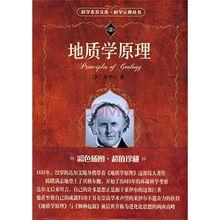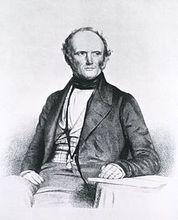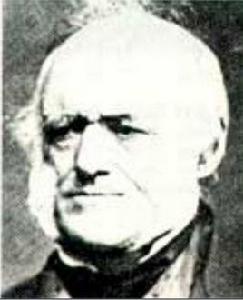生平
查爾斯·萊爾出生於蘇格蘭,是家裡十個小孩中的老大。萊爾的父親也叫做查爾斯,是個略有一點名氣的植物學家,他也是第一個讓小查爾斯接觸到自然博物學的人。萊爾在牛津大學的埃克塞特學院的學業結束於1816年,接著跟隨地質學家William Buckland 鑽研地質學。畢業以後他改行法律,但依舊沉浸餘地質學。他的第一篇論文,"On a Recent Formation of Freshwater Limestone in Forfarshire",發表於1822年。在1827年之前他就放棄法律,專心成為職業地質學家,他的地質學上的成就包括讓詹姆士‧賀登在幾十年前提出的理論廣為大眾接受。
在1840年代,他到美國和加拿大旅行,因此寫了兩本很受歡迎的旅行與地質學書籍,一本是1845年出版的《北美之旅》( Travels in North America)和1849年出版的《再訪美國》( A Second Visit to the United States)。他在1858年獲得科普利獎章(Copley Medal),1866年獲得沃拉斯頓獎(Wollaston Medal)。當他死於1875年,他被安葬於西敏寺。
著作
查爾斯·萊爾爵士最有名的作品是《地質學原理》 (Principles of Geology)。達爾文的演化論便是受到這本書的啟發。
地質學原理
 《地質學原理》
《地質學原理》《地質學原理》萊爾的主要著作,又名《可以作為地質學例證的地球與它的生物的近代變化》 (Modern Changes of the Earth and its Inhabitants Considered as Illustrative of Geoloay),初版共3卷,分別於1830年1月、1832年1月和1833年 5月出版。第四版分為4卷,1834年5月出版。其中第一卷論述地質學發展史和地質現象古今變化的原理;第二卷論述無機界現時正在進行的各種地質變化;第三卷論述有機界在自然選擇、地理分布和移徙,以及在人工馴養、培植等條件下所引起的變化;第四卷為地質學的基本內容。從1838年開始,萊爾把第四卷即地質學的基本內容抽出來並加以擴充,以《地質學綱要》 (Elements of Geology)的書名出版單行本。這本書在1851年又經過重編,定名為《普通地質學教科書》(Manual of Elementary Geology),1865年又改為《地質學綱要》。到 1872年,《地質學原理》共出版十一版。在書中,萊爾提出地球的變化是古今一致的,地質作用的過程是緩慢的、漸進的。地球的過去,只能通過現今的地質作用來認識。他的這種觀點被稱為“均變論”。《地質學原理》對當時和以後的地質科學發展都有很大的影響。《地質學原理》被譯成多種文字出版。《地質學綱要》在1872年由中國數學家華蘅芳和美國醫生瑪高溫合譯成中文出版,書名為《地學淺釋》。徐韋曼譯的《地質學原理》中譯本於1959年由北京大學出版社出版。
均變論
萊爾被譽為“現代地質學之父”的萊爾對均變論的形成和確立做出了重要的貢獻。1830年1月,發表了《地質學原理》第一卷(1831年出版第2卷,1833年5月出版第3卷)。他堅持並證明地球表面的所有特徵都是由難以覺察的、作用時間較長的自然過程形成的。他指出地殼岩石記錄了億萬年的歷史,可以客觀地解釋出來,而無需求助於《聖經》或災變論,同時,他承認陸地的升降運動,把義大利塞拉比寺院的三根石柱(它們曾部分被海水淹沒)作為《地質學原理》的刊頭畫,並指出斯德哥爾摩附近海面以上200尺的海生動物的貝殼說明陸地的上升。也就是說,要認識地球的歷史,用不著求助超自然的力和災變,因為通常看來是“微弱”的地質作用力 (大氣圈降水、風、河流、潮汐等),在漫長的地質歷史中慢慢起作用,就能夠使地球的面貌發生很大的變化。萊爾強調“現在是認識過去的鑰匙”,這一思想被發展為“將今論古”的現實主義原理,這種“將今論古”的科學方法對達爾文的影響很大。在萊爾逐步取代了居維葉之後,均變論在長達近一個世紀的時間裡成為地質學的信條,奠定了現代地質學的科學基礎。本世紀60年代以前的地質學教科書,幾乎異口同聲地說“萊爾用均變論統一說明了地質現象,建立了科學的地質學”。
成就榮譽
 查爾斯·萊爾
查爾斯·萊爾生於蘇格蘭法弗夏區的金諾鎮。1814年進入牛津大學,學習數學和古典文學,1816年改學法律,1821年進入林肯法學院。還在牛津大學時他選修了地質課,並參加了地質小組活動,受到了地質學 基礎知識的訓練,奠定了他從事地質學研究的基礎。萊伊爾法學院畢業後,放棄律師工作熱衷於地質學的研究,並做出卓越的貢獻,享有崇高的聲譽。早在1822年就當選為倫敦地質學會秘書,1849年當選為主席。1853年牛津大學授予名譽博士學位。1861年當選為英國皇家學會主席。1874年劍橋大學授予名譽博士學位,相繼選為法國科學院通訊院士。1848年英國政府晉封他爵士稱號。1861年代表倫敦大學出席了國會。他的主要論著《地質學原理》於1831-1833年共分三冊相繼出版。這是一部代表十九世紀進化論地質學的經典性作品,反映十九世紀地質學的理論發展水平,被譽為自然科學史上劃時代的名著。萊伊爾歷經十餘年的艱苦努力,足跡遍及歐洲各地。在掌握了大量豐富的第一手地質資料的基礎上,綜合汲取各家之長,建立起自己的地質理論一現實主義原則和“將今論古”的方法,進而提出了漸進論,為地質學理論的發展起了推動作用。恩格斯在《自然辯證法》一書中,對萊伊爾的貢獻,做過高度的 評價,指出:“在自然科學史上,對保守思潮打穿了“缺口”的傑出科學 成就有:第一個缺口:康德和拉普拉斯。第二個:地質學和古生物學(萊伊爾,緩慢進化論)…”。同時還指出:“只是萊伊爾才第一次把理性帶進地質學中,因為他以地球的緩慢的 變化這樣一種漸進作用,代替了由於造物主的一時興發所起的突然革命”。
萊伊爾的科學道路也不是一帆 風順的,其發展和成長過程更是曲折,甚至有過錯誤。他最早受他的老師貝克蘭(Buckland)的影響,是一個水成論者,物種不變論者。對他的觀點上的錯誤,恩格斯也給予了嚴厲的批判,指出“萊伊爾的觀點的缺陷——至少在其最初的形式上一在於:他認為在地球 上起作用的各種力是不變的,無論在質或量上都是不變的。地球的冷卻對他來說是不存在的;地球不是按照一定方向發展著,它只是毫無聯繫,偶然地變化著”。恩格斯的批判,主要針對他早期的論點,後來在達爾文的幫助下,放棄了物種不變論觀點,遺憾的是,他的學生們未能對地質作用的發展演變,做根本的改正,甚至導致絕對化,盲目陷入了均變論和等速論。
英文介紹
For other people named Charles Lyell, seeCharles Lyell (disambiguation). Sir Charles Lyell, 1st Baronet,KtFRS(14 November 1797 – 22 February 1875) was a Britishlawyerand the foremostgeologistof his day. He is best known as the author of Principles of Geology, which popularisedJames Hutton's concepts ofuniformitarianism– the idea that the earth was shaped by the same processes still in operation today. Lyell was also one of the first to believe that the world is older than 300 million years, on the basis of its geological anomalies. Lyell was a close and influential friend ofCharles Darwin.
Lyell was born inScotlandabout 15 miles north ofDundeein Kinnordy, nearKirriemuirinForfarshire(now inAngus). He was the eldest of ten children. Lyell's father, also named Charles, was a lawyer andbotanistof minor repute: it was he who first exposed his son to the study of nature.
The house/place of his birth is located in the north-west of theCentral Lowlandsin the valley of theHighland Boundary Fault. Round the house, in therift valley, is farmland, but within a short distance to the north-west, on the other side of the fault, are theGrampian Mountainsin theHighlands. His family's second home was in a completely different geological and ecological area: he spent much of his childhood atBartley Lodgein theNew Forest, England.
Lyell enteredExeter College, Oxfordin 1816, and attendedWilliam Buckland's lectures. He graduatedB.A.second class in classics, December 1819, andM.A.1821. After graduation he took up law as a profession, enteringLincoln's Innin 1820. He completed a circuit through rural England, where he could observe geological phenomena. In 1821 he attendedRobert Jameson's lectures in Edinburgh, and visitedGideon MantellatLewes, inSussex. In 1823 he was elected to join secretary of theGeological Society. As his eyesight began to deteriorate, he turned to geology as a full-time profession. His first paper, "On a recent formation of freshwater limestone in Forfarshire", was presented in 1822. By 1827, he had abandoned law and embarked on a geological career that would result in fame and the general acceptance of uniformitarianism, a working out of the ideas proposed byJames Huttona few decades earlier.
In 1832, Lyell marriedMary Hornerof Bonn, daughter ofLeonard Horner(1785–1864), also associated with theGeological Society of London. The new couple spent their honeymoon in Switzerland and Italy on a geological tour of the area.
During the 1840s, Lyell traveled to theUnited StatesandCanada, and wrote two popular travel-and-geology books: Travels in North America(1845) and A Second Visit to the United States(1849). After theGreat Chicago Fire, Lyell was one of the first to donate books to help found theChicago Public Library. In 1866, he was elected a foreign member of theRoyal Swedish Academy of Sciences.
Lyell's wife died in 1873, and two years later (in 1875) Lyell himself died as he was revising the twelfth edition of Principles. He is buried in Westminster Abbey. Lyell was knighted (Kt), and later made a baronet (Bt), which is a hereditary honour. He was awarded the Copley Medal of the Royal Society in 1858 and the Wollaston Medal of the Geological Society in 1866. Mount Lyell, the highest peak in Yosemite National Park, is named after him; the crater Lyell on the Moon and a crater on Mars were named in his honour; Mount Lyell in western Tasmania, Australia, located in a profitable mining area, bears Lyell’s name; and the Lyell Range in north-west Western Australia is named for him as well. The jawless fish Cephalaspis lyelli, from the Old Red Sandstone of southern Scotland, was named by Louis Agassiz in honour of Lyell.
Career and major writings
Lyell had private means, and earned further income as an author. He came from a prosperous family, worked briefly as a lawyer in the 1820s, and held the post of Professor of Geology atKing's College Londonin the 1830s. From 1830 onward his books provided both income and fame. Each of his three major books was a work continually in progress. All three went through multiple editions during his lifetime, although many of his friends (such as Darwin) thought the first edition of the Principleswas the best written.Lyell used each edition to incorporate additional material, rearrange existing material, and revisit old conclusions in light of new evidence.
Principles of Geology, Lyell's first book, was also his most famous, most influential, and most important book. First published in three volumes in 1830–33, it established Lyell's credentials as an important geological theorist and propounded the doctrine. It was a work of synthesis, backed by his own personal observations on his travels.
The central argument in Principleswas that the present is the key to the past – a concept of theScottish EnlightenmentwhichDavid Humehad stated as "all inferences from experience suppose ... that the future will resemble the past", andJames Huttonhad described when he wrote in 1788 that "from what has actually been, we have data for concluding with regard to that which is to happen thereafter."Geological remains from the distant past can, and should, be explained by reference to geological processes now in operation and thus directly observable. Lyell's interpretation of geologic change as the steady accumulation of minute changes over enormously long spans of time was a powerful influence on the youngCharles Darwin. Lyell askedRobert FitzRoy, captain ofHMS Beagle, to search for erratic boulders on thesurvey voyage of the Beagle, and just before it set out FitzRoy gave Darwin Volume 1 of the first edition of Lyell's Principles. When the Beaglemade its first stop ashore atSt Jago, Darwin found rock formations which seen "through Lyell's eyes" gave him a revolutionary insight into the geological history of the island, an insight he applied throughout his travels.
While inSouth AmericaDarwin received Volume 2 which considered the ideas ofLamarckin some detail. Lyell rejected Lamarck's idea of organicevolution, proposing instead "Centres of Creation" to explain diversity and territory of species. However, as discussedbelow, many of his letters show he was fairly open to the idea of evolution. In geology Darwin was very much Lyell's disciple, and brought back observations and his own original theorising, including ideas about the formation ofatolls, which supported Lyell's uniformitarianism. On the return of the Beagle(October 1836) Lyell invited Darwin to dinner and from then on they were close friends. Although Darwin discussed evolutionary ideas with him from 1842, Lyell continued to reject evolution in each of the first nine editions of the Principles. He encouraged Darwin to publish, and following the 1859 publication of On the Origin of Species, Lyell finally offered a tepid endorsement of evolution in the tenth edition of Principles.
The frontispiece from Elements of Geology
Elements of Geologybegan as the fourth volume of the third edition of Principles: Lyell intended the book to act as a suitable field guide for students of geology. The systematic, factual description of geological formations of different ages contained in Principlesgrew so unwieldy, however, that Lyell split it off as the Elementsin 1838. The book went through six editions, eventually growing to two volumes and ceasing to be the inexpensive, portable handbook that Lyell had originally envisioned. Late in his career, therefore, Lyell produced a condensed version titled Student's Elements of Geologythat fulfilled the original purpose.
Geological Evidences of the Antiquity of Manbrought together Lyell's views on three key themes from the geology of theQuaternary Periodof Earth history: glaciers, evolution, and theage of the human race. First published in 1863, it went through three editions that year, with a fourth and final edition appearing in 1873. The book was widely regarded as a disappointment because of Lyell's equivocal treatment ofevolution. Lyell, a devout Christian, had great difficulty reconciling his beliefs withnatural selection.
Scientific contributions
Lyell's geological interests ranged fromvolcanoesand geological dynamics throughstratigraphy,paleontology, andglaciologyto topics that would now be classified asprehistoric archaeologyandpaleoanthropology. He is best known, however, for his role in popularising the doctrine ofuniformitarianism.
An aerial photo of Vesuvius
Before the work of Lyell, phenomena such as earthquakes were understood by the destruction that they brought. One of the contributions that Lyell made inPrincipleswas to explain the cause of earthquakes.Lyell, in contrast focused on recent earthquakes (150 yrs), evidenced by surface irregularities such as faults, fissures, stratigraphic displacements and depressions.
Lyell's work on volcanoes focused largely onVesuviusandEtna, both of which he had earlier studied. His conclusions supported gradual building of volcanoes, so-called "backed up-building",as opposed to the upheaval argument supported by other geologists.
Stratigraphy
Lyell's most important specific work was in the field ofstratigraphy. From May 1828, until February 1829, he traveled withRoderick Impey Murchison(1792–1871) to the south ofFrance(Auvergne volcanic district) and toItaly. In these areas he concluded that the recent strata (rock layers) could be categorized according to the number and proportion of marine shells encased within. Based on this he proposed dividing theTertiaryperiod into three parts, which he named thePliocene,Miocene, andEocene. He also renamed the traditional Primary, Secondaryand Tertiaryperiods (now callederas) toPaleozoic,MesozoicandCenozoic, which nomenclature was gradually accepted worldwide.
Glaciers
Lateral moraine on a glacier joining the Gorner Glacier, Zermatt, Switzerland.
In Principles of Geology(first edition, vol. 3, Ch. 2, 1833) Lyell proposed thaticebergscould be the means of transport forerratics. During periods of global warming, ice breaks off the poles and floats across submerged continents, carrying debris with it, he conjectured. When the iceberg melts, it rains down sediments upon the land. Because this theory could account for the presence of diluvium, the word driftbecame the preferred term for the loose, unsorted material, today called till. Furthermore, Lyell believed that the accumulation of fine angular particles covering much of the world (today calledloess) was a deposit settled from mountain flood water. Today some of Lyell's mechanisms for geologic processes have been disproven, though many have stood the test of time. His observational methods and general analytical framework remain in use today as foundational principles in geology.
Evolution
Lyell first received a copy of one ofLamarck's books fromMantellin 1827, when he was on circuit. He thanked Mantell in a letter which includes this enthusiastic passage:
"I devoured Lamark... his theories delighted me... I am glad that he has been courageous enough and logical enough to admit that his argument, if pushed as far as it must go, if worth anything, would prove that men may have come from theOurang-Outang. But after all, what changes species may really undergo!... That the Earth is quite as old as he supposes, has long been my creed..."Charles Darwin
In the second volume of the first edition of PrinciplesLyell explicitly rejected the mechanismof Lamark on thetransmutation of species, and was doubtful whether species were mutable.However, privately, in letters, he was more open to the possibility ofevolution:
"If I had stated... the possibility of the introduction or origination of fresh species being a natural, in contradistinction to a miraculous process, I should have raised a host of prejudices against me, which are unfortunately opposed at every step to any philosopher who attempts to address the public on these mysterious subjects".
This letter makes it clear that his equivocation on evolution was, at least at first, a deliberate tactic. As a result of his letters and, no doubt, personal conversations,HuxleyandHaeckelwere convinced that, at the time he wrote Principles, he believed new species had arisen by natural methods. BothWhewellandSedgwickwrote worried letters to him about this.
Later,Darwinbecame a close personal friend, and Lyell was one of the first scientists to support On the Origin of Species, though he did not subscribe to all its contents. Lyell was also a friend of Darwin's closest colleagues,HookerandHuxley, but unlike them he struggled to square his religious beliefs with evolution. This inner struggle has been much commented on. He had particular difficulty in believing innatural selectionas the main motive force in evolution.
Alfred Russel Wallacein 1862.
Lyell and Hooker were instrumental in arranging the peaceful co-publication of the theory of natural selection by Darwin andAlfred Russel Wallacein 1858: each had arrived at the theory independently. Lyell's data onstratigraphywere important because Darwin thought that populations of an organism changed slowly, requiring "geologic time".
Although Lyell did not publicly accept evolution (descent with modification) at the time of writing the Principles,after the Darwin–Wallace papers and the OriginLyell wrote in his notebook:
May 3, 1860: "Mr. Darwin has written a work which will constitute an era in geology & natural history to show that... the descendants of common parents may become in the course of ages so unlike each other as to be entitled to rank as a distinct species, from each other or from some of their progenitors".
Lyell's acceptance of natural selection, Darwin's proposed mechanism for evolution, was equivocal, and came in the tenth edition of Principles. The Antiquity of Man(published in early February 1863, just before Huxley's Man's place in nature) drew these comments from Darwin to Huxley:
"I am fearfully disappointed at Lyell's excessive caution" and "The book is a mere 'digest' ".
Quite strong remarks: no doubt Darwin resented Lyell's repeated suggestion that he owed a lot toLamarck, whom he (Darwin) had always specifically rejected. Darwin's daughter Henrietta (Etty) wrote to her father: "Is it fair that Lyell always calls your theory a modification of Lamarck's?"
In other respects Antiquitywas a success. It sold well, and it "shattered the tacit agreement that mankind should be the sole preserve oftheologiansandhistorians".But when Lyell wrote that it remained a profound mystery how the huge gulf between man and beast could be bridged, Darwin wrote "Oh!" in the margin of his copy.


